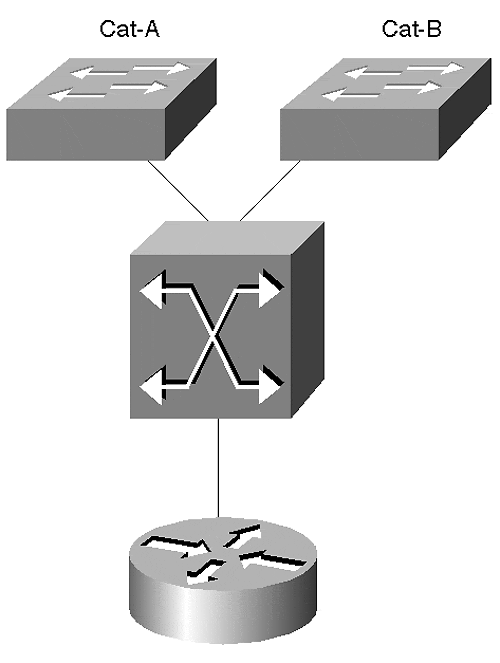Exercises
This section includes a variety of questions and hands-on lab exercises. By completing these you can test your mastery of the material included in this chapter as well as help prepare yourself for the CCIE written and lab tests.
Review Questions
1:
What are the three layers of the ATM stack? What does each do?
2:What is the difference between ATM and SONET?
3:What is the difference between a Catalyst with two LANE modules and a two-port ATM switch?
4:What is the difference between a VPI, a VCI, and an NSAP? When is each used?
5:Assume you attached an ATM network analyzer to an ATM cloud consisting of one LS1010 ATM switch and two Catalysts with LANE modules. What types of cells could you capture to observe VPI and VCI values? What type of cells could you capture to observe NSAP addresses?
6:What are the three sections of an NSAP address? What does each part represent?
7:How do Catalysts automatically generate ESI and selector byte values for use with LANE?
8:What is the five-step initialization process used by LANE Clients to join an ELAN?
9:What are the names of the six types of circuits used by LANE? What type of traffic does each carry?
10:What is the difference between an IP ARP and an LE_ARP?
11:In a network that needs to trunk two VLANs between two Catalysts, how many LECs are required? How many LECSs? How many LESs? How many BUSs?
12:If the network in Question 12 grows to ten Catalysts and ten VLANs, how many LECs, LECSs, LESs and BUSs are required? Assume that every Catalyst has ports assigned to every VLAN.
13:Trace the data path in Figure 9-26 from an Ethernet-attached node in VLAN 1 on Cat-A to an Ethernet-attached node in VLAN 2 on Cat-B. Why is this inefficient?
Hands-On Lab
Build a network that resembles Figure 9-29.
Figure 9-29. Hands-On Lab Diagram

Table 9-6 shows the LANE components that should be configured on each device.
Table 9-6. LANE Components to Be Configured
Device
VLAN1/ELAN1
VLAN2/ELAN2
VLAN3/ELAN3
LEC-A
LEC, LES/BUS
LEC
LEC
LEC-B
LEC
LEC, LES/BUS
LEC
Router
LEC
LEC
LEC, LES/BUS
LS1010
LEC
LEC
LEC
The LS1010 is the LECS.
Configure IP addresses on the SC0 interfaces of both Catalysts, the router subinterfaces, and the LS1010 subinterfaces (use interface atm 2/0/0 or 13/0/0 for the LS1010). Configure HSRP between the ATM router and an RSM located in LEC-A. Table 9-7 provides IP addresses that can be used.
Table 9-7. IP Addresses for Hands-On Lab
Device
VLAN1/ELAN1
VLAN2/ELAN2
VLAN3/ELAN3
LEC-A SC0
10.1.1.1
LEC-A RSM
10.1.1.252
10.1.2.252
10.1.3.252
LEC-B SC0
10.1.1.2
Router
10.1.1.253
10.1.2.253
10.1.3.253
LS1010
10.1.1.110
10.1.2.110
10.1.3.110
HSRP Address
10.1.1.254
10.1.2.254
10.1.3.254
When you are done building the network, perform the following tasks:
Test connectivity to all devices.
Turn on debug lane client alland ping another device on the network (you might need to clear the Data Direct if it already exists). Log the results.
With debug lane client all still running, issue shut and no shut commands on the atm major interface. Log the results.
Examine the output of the show lane client, show lane config, show lane server, show lane bus, and show lane databasecommands.
Add SSRP to allow server redundancy.
If you have multiple ATM switches, add dual-PHY support (don't forget to update your SSRP configurations).
EAN: N/A
Pages: 223